In 2012, an unusual move of Sony was to
reinforce the basic NEX line which made us confused, and generally
unimpressive. NEX-F3 was a good mirror less interchangeable camera considering
most respects, but the larger shape made us put our hope in the next-generation
model providing lots of things that’s equal to the predecessor, NEX-C3 – a
camera which a lot of our employee still used to review and take photos of the
commercial conference, thanks to consistent performance and light weight. We’re
quite tranquil when seeing 2013’s device representing the comeback with the 2011
design, with some very compelling extras.
Like the last-year model and even C3, Sony
NEX-3N packs the 16.1MP APS-C CMOS sensor. The chip is physically larger than
what you will find on a Micro Four Thirds camera, and it’s comparable in terms
of size with other sensors having their presence in lots of large-sized DSLR. This
sensor is the key for the success of 3N – it allows the camera to provide
performance that is similar to DSLR in a much smaller body, even cheaper. On
the occasion of speaking about this, the 3N kit set costs 500 USD, though you
can find it cheaper, including the zoom lens that can retract 16-50mm – we will
talk about it later.
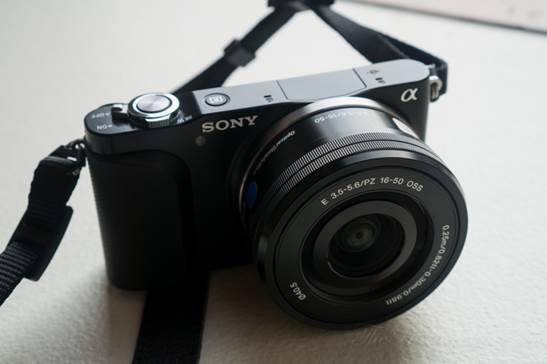
On
the occasion of speaking about this, the 3N kit set costs 500 USD, though you
can find it cheaper, including the zoom lens that can retract 16-50mm – we will
talk about it later.
Hardware
The most famous property of NEX-3N is the
size – except for the lens, it’s only thicker than the pack of cards, with the
body having the size of 4.3-inch in width, 2.4-inch in height and 1.4-inch in
depth. It’s pretty lightweight, with 7.4 ounce (body only), but it still feels
solid, and is well-made. Adding a 16-50mm f/3.5-5.6 lens is for the purpose of
increasing the weight and depth of the camera, though the protrusion is not
larger than we used to see with the previous inclusion of Sony, which lacks of
the retractable zoom design of this prominent optic in general. The removable
lens is available inside the box, making this 500USD 3N kit sets become a good
bargain, especially if you consider the separate price of 350 USD of zoom.
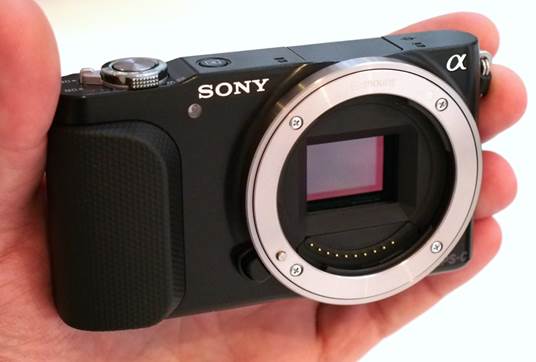
The
most famous property of NEX-3N is the size – except for the lens, it’s only
thicker than the pack of cards, with the body having the size of 4.3-inch in
width, 2.4-inch in height and 1.4-inch in depth.
Another addition is the built-in pop-up flash.
Certainly, adding flickering eyes without increasing the size of the body has
the compromise – there’s no exclusive mount on the top, which means that the
exterior mic is not for deliberation. That may confuse the video-recorder, especially
considering stereo microphone of the camera mounting on the top instead of the
front, sitting beside the lens. That configuration makes 3N suitable for the
relation but not an ideal option to perform the interviews in noisy
environments. We’re ready to let go this carelessness if Sony includes a microphone
input, but no such port present.
Sony changed the position of the port a
little bit in 2013. The only I/O options can be accessed by lifting 1 port
sitting on the left of the camera, behind which you can find a micro-HDMI and
micro-USB connector, along with the SD slot. Before, the detachable storage can
only be accessed from the bottom of the camera, which normally means that you
have to pull out 1 mount tripod before inserting the new memory card, so this
left slot is more highly appreciated. Battery door still sits on the bottom of
the camera, but 3N is rechargeable by using USB adapter, so unless you want to
change the battery for lasting shooting, your battery can make itself
comfortable.
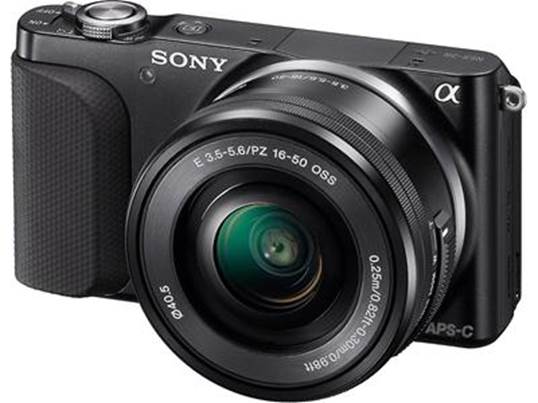
Sony
changed the position of the port a little bit in 2013.
On the other hand, layout is still
unchanged in the way it looks. The power button, shutter button and playback button
are all sit on the top of the camera, with the new zoom switch sitting around
the shooting controller. You can zoom by using this new controller or the one
which is mounted on the main lens, though we think that the options on the
camera provide smoother zoom throughout the video-recording process, though
with the limited changeable speed. However, if you’re shooting, the switch
mounted on the lens may be a better choice, thanks to the ability of full zoom
with a single tap.
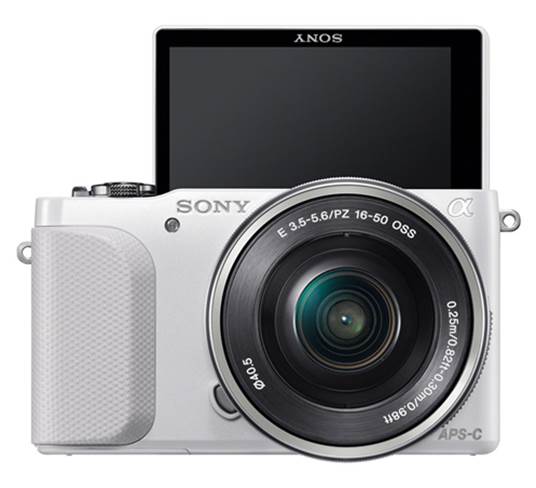
On
the other hand, layout is still unchanged in the way it looks. The power
button, shutter button and playback button are all sit on the top of the
camera, with the new zoom switch sitting around the shooting controller.
On the camera’s back, there’s 3-inch 461kdot
LCD screen which is able to spin 180 degree to make “self-shooting” images,
like on F3 – on the other hand, C3 provides bigger flexibility when talking
about tilting downward, which seems to be convenient when framing images on the
top. The screen itself is sharp and bright enough – the enhanced Sunny Weather mode
works well outdoors, but with this mode activated, images on the screen are
more saturated with higher contrast than what you can actually shoot. It should
have been natural for a camera in such price range, there’s no EVF, so all of
your images will be composed by using LCD.
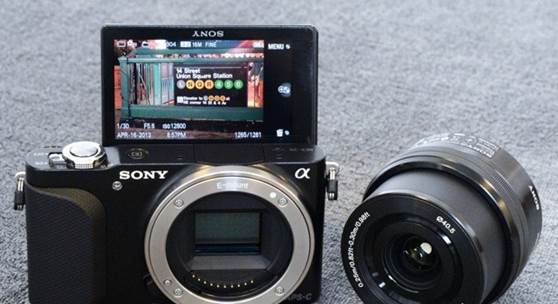
On
the camera’s back, there’s 3-inch 461kdot LCD screen which is able to spin 180
degree to make “self-shooting” images
Sitting on the right of the screen, you
will find 2 things that can change the activations of the different adjustments
depending on the mode, along with the similar 4-direction wheel with the center
selector which we have found on every NEX model, with the dedicated buttons for
the screen settings, shooting modes, exposure and ISO. There’s also a video
recording button on the top of the camera, right on the place you put your
thumb.